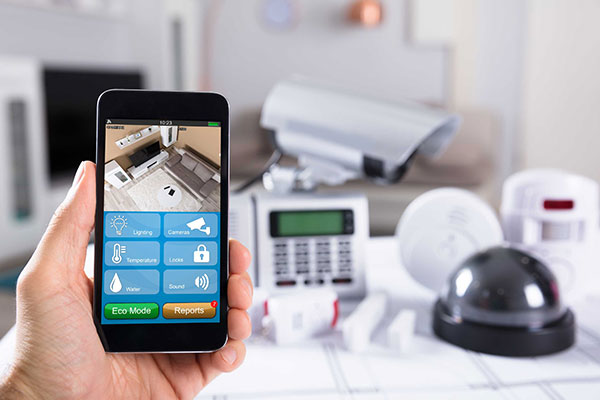Fire Alarm Basics: What Is Cellular Monitoring and How Does It Work?
There are a number of ways to receive the alarms at a monitoring station. These are divided into two categories of monitoring: active and passive.
Passive alarm monitoring relies on your facility checking in once daily to the signals receiving center and acknowledging their presence on the network. This can be done in the form of a digital dialer or phone line, cellular and IP. It can be slightly less secure than active monitoring in that breaks in the communication pathway for any reason such as cuts in the telephone line will not be noted until the facility misses its next scheduled reporting period.
If there is a desire or a requirement to have a higher level of security, something called dual-path monitoring is required. This is when two non-redundant forms of communication are present so that each pathway monitors the other, so that in the even that one communication pathway goes down for any reason, the other can inform the monitoring station. For example, a cellular communicator and a digital dialer can both be used in dual-path monitoring, and both will run at the same time. If the cellular communicator goes offline, the digital dialer can send a signal to the monitoring station to inform them of the phenomenon.
In active alarm monitoring, signals are sent to the receiving center every three minutes or 180 seconds and is actively supervised by the receiving center. Should there be a breakdown in the communication pathway from the facility and the signal receiving center, the center will be able to respond within three minutes of its occurrence. These systems include DVACS or Digital Voice Access Control Systems, cellular communication pathways and IP.


Active monitoring systems are not prone to downtime and are very stable. Before implementation, make sure that the service is tested well in order to ensure its reliability.
DVACS has begun to be phased out for various reasons, the foremost of which are related to the cost of implementing the systems and the fact that equipment manufacturers no longer make products that can utilize the DVACS communication methods. For a while, there was no active replacement for it and facilities had to rely on the passive form of monitoring, which was time-consuming and inefficient on the customer's end.
Cellular monitoring is now available and is a worthy if not better successor to DVACS. It operates much in the same way as DVACS did in that it is a supervised communication pathway connecting your facility to the signals receiving center, all done over a cellular network. It does not require a secondary communication pathway as in dual-path passive monitoring, and the company will handle all installation aspects including management of the cellular service. It also costs less than having to pay for a new phone line or internet connection on top of the cost of monitoring.
Fire Alarm Houston specializes in all types of monitoring systems and equipment. For more information regarding top-of-the-line monitoring and detection systems, please call us at 832-626-7837 or get in touch with us through our Contact Us page.
- Aldine
- Alvin
- Ames
- Anahuac
- Angleton
- Arcola
- Atascocita
- Austin
- Bacliff
- Bailey Prairie
- Barker
- Barrett
- Bay City
- Bayou Vista
- Baytown
- Beach City
- Beasley
- Beaumont
- Bellaire
- Boling
- Bonney
- Brazoria
- Brazos Country
- Brookshire
- Brookside Village
- Bunker Hill Village
- Cedar Park
- Channelview
- Cinco Ranch
- Clear Lake Shores
- Cleveland
- Cloverleaf
- Clute
- Conroe
- Corsicana
- Cove
- Crosby
- Cumings
- Cut And Shoot
- Cypress
- Damon
- Danbury
- Dayton
- Dayton Lakes
- Deer Park
- Dickinson
- East Bernard
- El Lago
- Fairchilds
- Fifth Street
- Fort Bend
- Four Corners
- Freeport
- Fresno
- Friendswood
- Fulshear
- Galena Park
- Galveston
- Grand Prairie
- Greatwood
- Guy
- Hardin
- Harris
- Hedwig Village
- Hempstead
- Highlands
- Hillcrest
- Hilshire Village
- Hitchcock
- Hockley
- Holiday Lakes
- Houston
- Huffman
- Hufsmith
- Humble
- Hungerford
- Hunters Creek Village
- Huntsville
- Iago
- Iowa Colony
- Jacinto City
- Jamaica Beach
- Jersey Village
- Katy
- Kemah
- Kendleton
- Kenefick
- Kingwood
- La Marque
- La Porte
- Lake Jackson
- League City
- Liberty
- Liverpool
- Livingston
- Lorena
- Magnolia
- Manor
- Manvel
- Meadows Place
- Mission Bend
- Missouri City
- Mont Belvieu
- Montgomery
- Morgans Point
- Nassau Bay
- Navasota
- Needville
- New Territory
- North Cleveland
- North Houston
- Oak Island
- Oak Ridge North
- Old River-Winfree
- Orange
- Orchard
- Panorama Village
- Pasadena
- Pattison
- Patton Village
- Pearland
- Pecan Grove
- Pine Island
- Pinehurst CDP
- Piney Point Village
- Pleak
- Plum Grove
- Port Arthur
- Porter
- Porter Heights
- Prairie View
- Richardson
- Richmond
- Richwood
- Roman Forest
- Rosenberg
- Rosharon
- Sabine Pass
- San Antonio
- San Felipe
- San Leon
- Santa Fe
- Seabrook
- Sealy
- Seguin
- Sheldon
- Shenandoah
- Shoreacres
- Silsbee
- Simonton
- South Houston
- Southside Place
- Splendora
- Spring
- Stafford
- Stagecoach
- Sugar Land
- Taylor Lake Village
- Texas City
- The Woodlands
- Thompsons Alief
- Tiki Island
- Todd Mission
- Tomball
- Waller
- Wallis
- Webster
- West Columbia
- West University Place
- Weston Lakes
- Willis
- Woodbranch
- Woodloch


